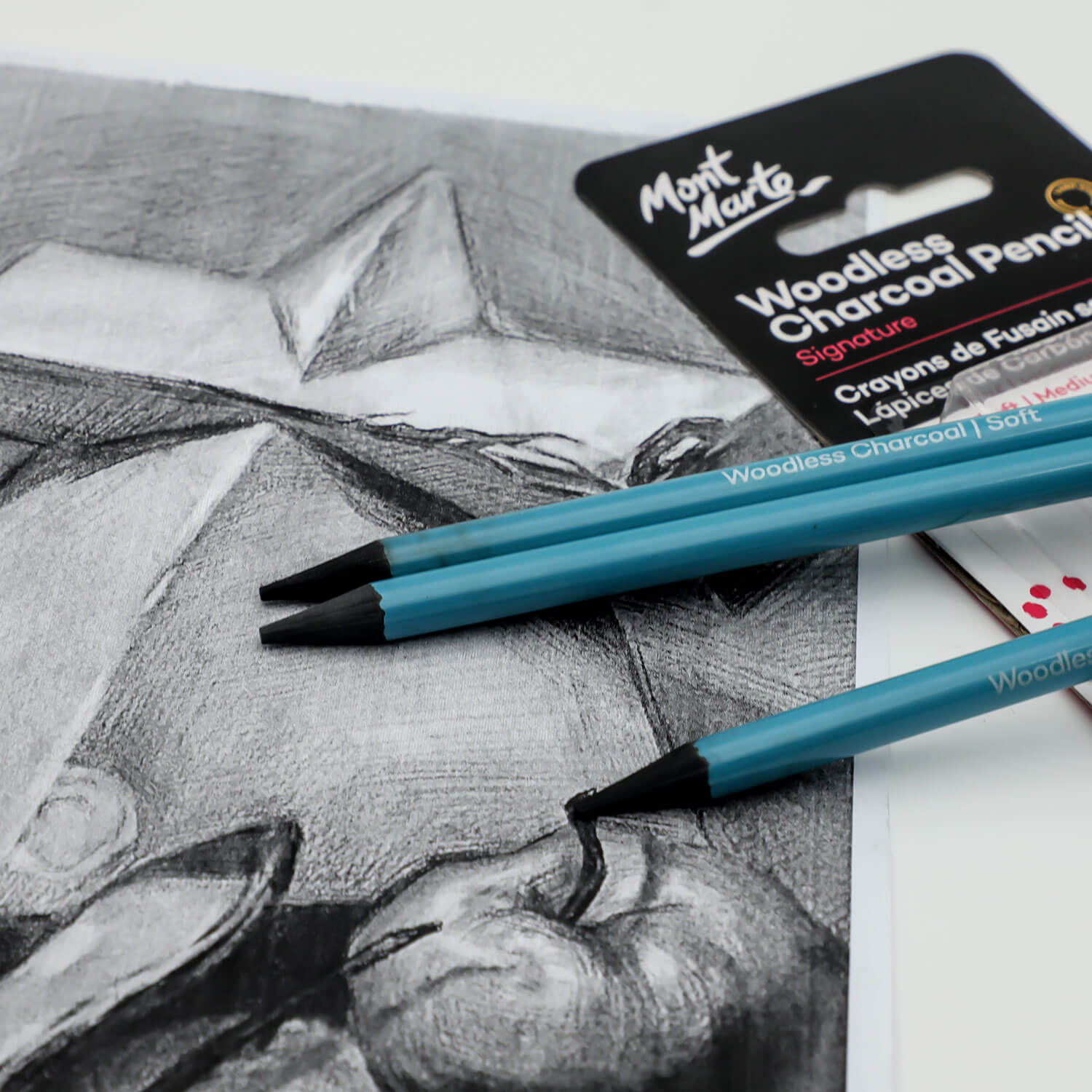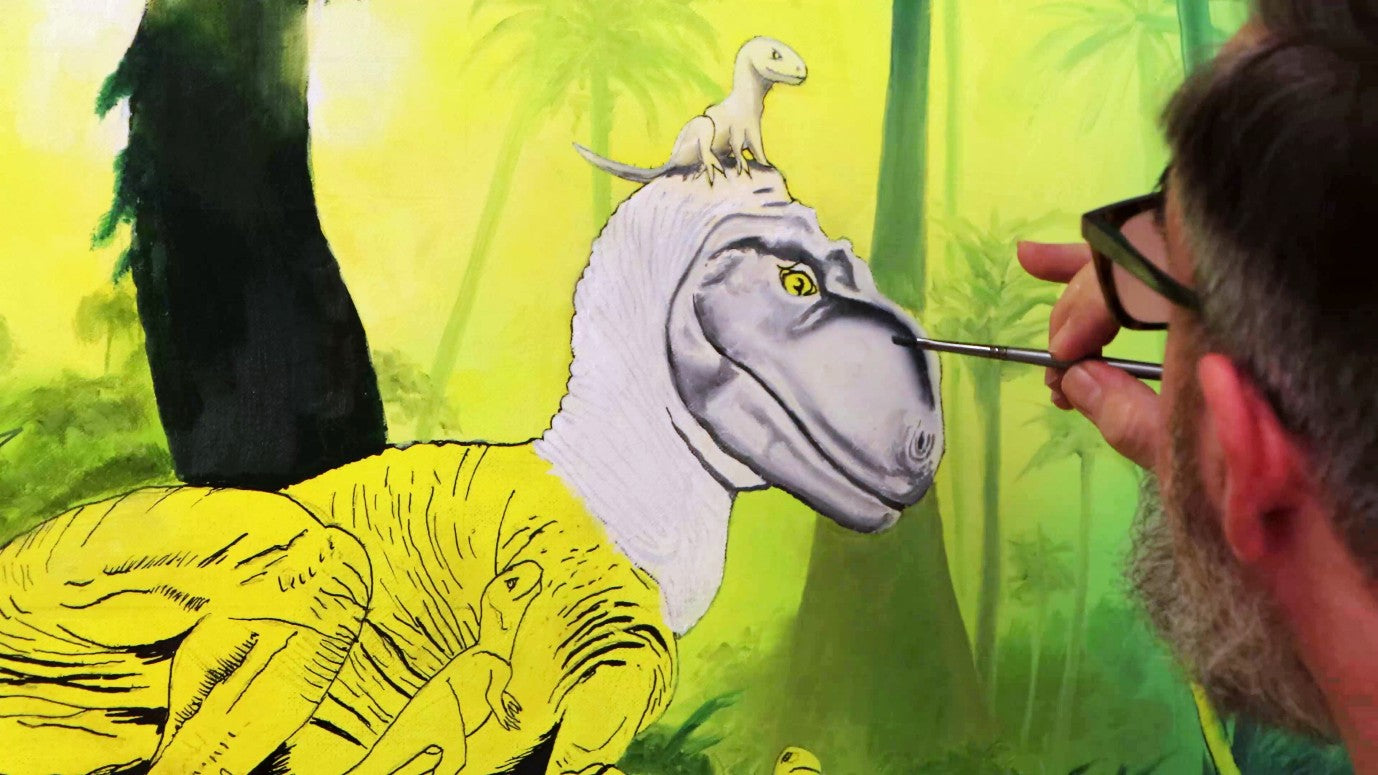We’ve got a bunch of answers to common drawing questions so you can get sketching with confidence. From sharpening habits to blending techniques, we’ve got all kinds of important info to help you start drawing sooner. Read on to get inspired!
1. How to sharpen charcoal pencils?

The cores inside charcoal pencils can be fragile and easy to break if you don’t know the best way to look after them. If you’ve used charcoal sticks before, you know what we mean! For charcoal pencil sharpening, we recommend using a hobby knife to minimise fractures. Make sure to direct the blade away from yourself and take extra care!
2. How to sharpen pastel pencils?
Pastel pencils work best when treated with care. They’re great for smooth, powdery physical blending, as the pastel creates vibrant chalky colour on the page. The trade-off for their soft, crumbly texture is a fragile core, which can’t be sharpened in a standard sharpener. We recommend using a sharp hobby knife to hone the points of your pencils when they get dull, being careful to direct the blade away from you and exercise caution.
3. What are woodless pencils used for?

Woodless means that it has a lacquer coating on the outside of the pencil, rather than wood. It helps to create broader lines and more consistent shading in larger areas as there is more core exposed to work with (e.g., graphite, charcoal, etc.). We have Woodless Charcoal, Watercolour, and Graphite pencils available.
4. How do I fix charcoal drawing when my pencils aren’t working?
If your charcoal or charcoal pencils don’t seem to be leaving marks on your page no matter how hard you press, you may have some foreign matter at the tip! While very uncommon, during manufacturing foreign material may accidentally combine with the charcoal and prevent the pigment from transferring onto your page. It won’t be all the way through the pencil, and it’s super easy to fix – just sand or sharpen down a little further and you should be able to get past it! Once you have sanded or sharpened a little, test again on the page and continue to the process until your pigment is transferring.
5. Does drawing help with stress?

Simple sketching and doodling can be a handy way to ground yourself and mindfully focus on an activity outside of whatever is stressing you out. It can create a sense of control in situations when you’re feeling out of your depth, forming space between you and your unwanted thoughts. Increasing mental clarity helps to put things into perspective and organise your thoughts, rather than being overwhelmed by them.
Next time you're stressed, set aside a short window of time to create without intention so you can give your mind a break. You may find it helps more than you would have thought!
6. How to start drawing?
There’s strictly no best way to start drawing – any way that gets you putting pencil to page is the right way! But if you’re looking for some ideas to get you started, maybe have a go at doodling different line weights, shading techniques, and shapes. This is a great entry-level way to get used to sketching mediums with less pressure and no expectations.
Next up, maybe have a go at drawing a circle and transforming it into a sphere with simple dimensional shading. You can try this out with other prisms, so you get familiar with how to add depth to your shapes.
If you want to move onto drawing from a reference, try exploring grid paper to map out proportions accurately. Draw a matching grid on your reference so you know how many squares certain features measure, making it easier to replicate in your sketch!
Once you’re comfortable with proportions, feel free to have a go at drawing perspective. We have a few different tutorials to show you how to draw one-point, two-point, and three-point perspectives to help get you started.
Once you’ve covered the basics, it’s time to freehand from a reference! Put into practice all you have learned to get the proportions, perspective, and dimensions accurate.
There’s no one way to draw and art is subjective – so keep trying and find your style! Practice helps too 😊
7. What are the different pencil grades?

Pencil grades tell you how light/hard and dark/soft a graphite pencil is. Graphite pencils typically have an H or B grade (e.g., 2H v 2B). The H stands for hard and the B stands for blackness.
Harder H pencils produce lighter lines because they contain more filler and less graphite, while blacker B pencils make a darker mark as they're softer and contain less filler.
Pencils are graded in the following order: 9H, 8H, 7H, 6H, 5H, 4H, 3H, 2H, H, F, HB, B, 2B, 3B, 4B, 5B, 6B, 7B, 8B, 9B, 9xxB. Standard drawing sets usually run from 2H through to 6B because these grades work to create most of the techniques you’ll need for your drawings.
For more pencil grade info, check out our Tips blog: Pencil Grades Explained.
8. How to think of drawing ideas?
There are loads of ways to find ideas for your next sketch! Look around you for inspiration, from lyrics on the radio to the view outside your window. Ask a friend for a prompt or draw their favourite animal.
You can also browse online for creative ideas. We’ve got stacks of inspiring content in our Inspo collection, gathered from talented artists across the globe. Next time you stumble into art block, check out our blogs to get creating again!
9. How to blend graphite?

While you can blend graphite a little bit with your fingers or a cotton bud, our blending stumps and tortillions are a better fit for cleaner blending. Graphite will never blend the way charcoal or pastels do, as they are made from a less blendable material which gives them stronger cores. If you are going to blend graphite though, you’ll have much more success smudging the B range, as they have less filler which makes them softer and more pigmented.
Now you know some handy drawing tips, we hope you feel ready to pick up your pencils and get sketching! Check out our Drawing collection to stock up on sketch supplies.
If you’re feeling inspired to create, #montmarteart or tag us @montmarteart on Instagram or Facebook. We want to see what you come up with!
Looking for more? Check out our Projects and How-to’s for inspiration. If you want answers to more art questions, get reading in our FAQs collection.





























